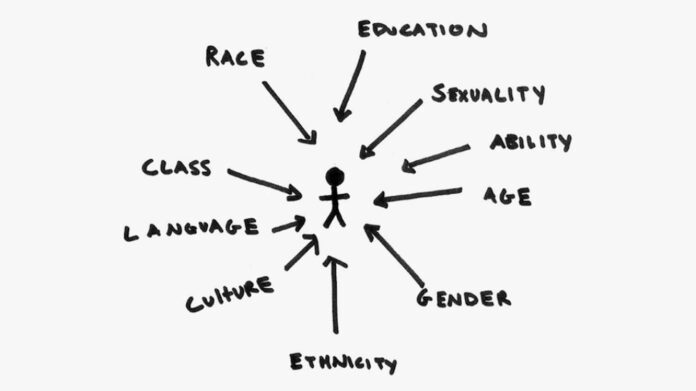Feminism has evolved significantly over the last century, responding to the diverse needs and experiences of women around the world. As the discourse surrounding feminist theory has expanded, one specific branch has garnered attention for its nuanced approach: intersectional feminism. This philosophical paradigm recognizes that various forms of oppression intertwine and influence one another, shaped by factors such as race, class, sexuality, and disability. This article will critically examine whether intersectional feminism is the best kind of feminism by exploring its historical significance, foundational principles, and its implications for contemporary feminist activism.
Intersectional feminism arose from the need to address the inadequacies of the mainstream feminist movement, which often centered on the experiences of white, middle-class women while marginalizing others. The term “intersectionality,” coined by legal scholar Kimberlé Crenshaw in the late 1980s, emphasizes that individuals experience multiple identities simultaneously and that these identities can lead to unique experiences of oppression. Consequently, the feminist discourse must grapple with the complexities of these intersecting identities to forge a more inclusive movement.
The following sections delve into the historical and contemporary relevance of intersectional feminism, evaluating its efficacy in addressing systemic injustices and its application in various sociopolitical contexts.
Historical Context of Intersectional Feminism
The roots of intersectional feminism can be traced back to the abolitionist and civil rights movements of the 19th and 20th centuries. Noteworthy figures like Sojourner Truth and Audre Lorde articulated the intersection of race, gender, and class in their calls for social justice. Truth, in her famous “Ain’t I a Woman?” speech, highlighted how the struggles faced by Black women differed from those of their white counterparts, drawing attention to the complexities of identity that must be considered in feminist discourse.
In the late 20th century, feminist scholars sought to address the shortcomings of second-wave feminism, which often overlooked the voices and struggles of women of color and marginalized groups. Crenshaw’s introduction of intersectionality challenged the singular focus of feminist theory, promoting a more holistic understanding of women’s experiences. This theoretical framework laid the groundwork for the development of intersectional feminism as a vital tool for understanding and combating systemic inequalities.
As intersectional feminism gained traction, it shifted the narrative from a universalized notion of womanhood to an acknowledgment of diversity within female experiences. By situating women’s struggles within broader societal contexts, intersectionality allows for a more rigorous understanding of the multifaceted nature of oppression and the need for solidarity across various movements.
Principles of Intersectionality
At the heart of intersectional feminism lies the recognition that individuals are shaped by their unique social locations, which, in turn, influence their experiences of privilege and oppression. By acknowledging the interplay of multiple identities—such as race, socioeconomic status, sexual orientation, and ability—intersectional feminism dismantles the simplistic binaries often found in traditional feminist discourse.
One of the core principles of intersectional feminism is the idea that societal structures operate through various axes of discrimination, creating a matrix of domination. This understanding highlights the necessity for feminist activism to address not only gender inequality but also the intricate systems of power that perpetuate oppression in its many forms. By engaging in a more comprehensive analysis of social injustice, intersectional feminism fosters strategies that are inclusive and equitable.
Furthermore, intersectional feminism values the significance of lived experiences, advocating for the self-determination of marginalized voices. It promotes the importance of centering the narratives of those who are often rendered invisible, enabling a more robust and multifaceted feminist movement. Consequently, intersectional feminism not only critiques existing power structures but also seeks to amplify the voices of the oppressed, positioning their experiences as essential to understanding the broader struggle for gender equity.
Contemporary Implications of Intersectional Feminism
In the 21st century, intersectional feminism is increasingly relevant within various sociopolitical contexts, shaping movements aimed at systemic change. The #MeToo movement, for instance, exemplifies how intersectionality can inform a deeper understanding of sexual violence and harassment. While the movement gained momentum through the voices of prominent women, it also highlighted the experiences of marginalized groups—underscoring how race, class, and sexual orientation intersect to influence the prevalence and perception of sexual violence.
Moreover, intersectional feminism plays a pivotal role in addressing issues related to environmental justice and climate change. As marginalized populations are often disproportionately affected by environmental degradation and climate-related disasters, intersectional frameworks promote an understanding that women’s rights are inherently linked to environmental justice. Activists recognize the necessity of connecting feminist goals with broader social and environmental issues, advocating for policies that address the root causes of oppression across multiple dimensions.
Globalization presents another arena in which intersectional feminism can be vital for shaping equitable feminist practices. As women’s rights advocates confront the challenges posed by neoliberal policies and global capitalism, intersectional feminism offers a lens through which to analyze the complex relationships between gender, economics, and power on a global scale. By embracing intersectionality, feminist activists can work collaboratively across borders, recognizing that women’s struggles for equality must consider the intricate dynamics of race, class, and imperialism that shape their realities.
Critiques and Limitations of Intersectional Feminism
Additionally, the application of intersectional feminism requires a balance between theoretical analysis and practical activism. While it is essential to recognize the diverse experiences of women, activists must also be willing to develop concrete strategies for addressing injustices. Striking this balance is crucial for ensuring that the movement remains focused on achieving measurable outcomes, rather than becoming ensnared in theoretical debates.
Conclusion: Embracing Intersectional Feminism for a Better Future
In light of its historical significance, foundational principles, and contemporary relevance, it is evident that intersectional feminism represents one of the most compelling approaches within the feminist movement. Recognizing the complexity of women’s experiences and addressing the intersections of identity and oppression fosters a more inclusive and equitable movement. As we move forward, embracing intersectional feminism can help us to better understand the systemic injustices that pervade our societies, ultimately contributing to a more just and equitable world for all.





























